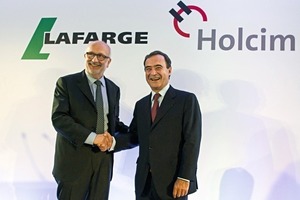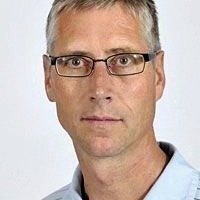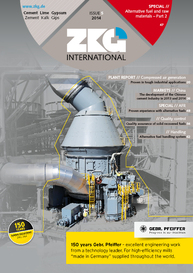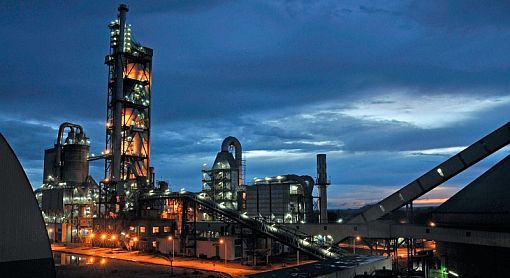Neue Züricher Zeitung: New global cement map
The Holcim and Lafarge top managements intend in future to serve the largest possible regions of the world together. Overlaps are assessed as relatively low, the efficiency gains as “high”.
Things are moving on the map of the global cement business. The managements of the industry’s two largest groups, Holcim and Lafarge, announced on Monday their plans for the merging of the two companies, emphasising more than once that this is not a “defensive” tactic to reduce capacity, but rather a change up to a higher gear. They noted that each has been strong in individual disciplines up to now, but that they now intend to play as a high-power team. The Swiss-managed cement and additives/aggregates group, Holcim, and its French-based competitor, Lafarge, are to join forces in a “merger of equals”; their combined geographical presence will extend to some ninety countries, and conspicuous duplications are to be eliminated.
The merged company bears the provisional name of “LafargeHolcim”[1], and has its registered offices in Switzerland. According to the announcement, the two supervisory boards approved the merger unanimously, while both parties’ principal shareholders, i.e. Thomas Schmidheiny, on the Holcim side (in future, 11 %), and Groupe Bruxelles Lambert (GBL, 10 %) and NNS (Sawiris, 7 %), on the Lafarge side, signalled their full support.
1-to-1 shares swap
In formal terms, Holcim launched a public take-over bid for Lafarge, with a swap ratio of one Holcim share for one Lafarge share. Stock market listing is planned for Zurich and Paris. The balance in the new shareholder body will probably be slightly off the 50:50 mark, since Holcim, at 327 million, has somewhat more issued shares than Lafarge. The transaction is to be completed during the first half of 2015. The main domicile will be Switzerland, with operational centres distributed “efficiently” between there and France. Lafarge group CEO and President Bruno Lafont is to be the operational chief, and will also join the new supervisory board.
The supervisory board of the new Lafarge-Holcim will comprise 14 persons, seven from the Holcim and seven from the Lafarge camp. Wolfgang Reitzle, who has been on the Holcim supervisory board for a year, and was the designated successor of the departing Rolf Soiron as president of the Holcim supervisory board on the General Meeting on 29.04.2014, is also to be President of the supervisory board of the new company. In line with the choice of a registered office in Switzerland, Swiss Corporate Governance rules will also apply.
The project was enthusiastically outlined and vaunted as having no parallel anywhere in the cement industry in the context of a telephone conference between Soiron, Lafont, and the new CFO, Thomas Aebischer (currently CFO at Holcim). The new company was referred to as the “most progressive” in the building materials, cement and additives/aggregates industry, with references to a pioneering role in innovation, environmental protection, sustainability, resources efficiency and the facilitation of affordable architectural and building methods and the corresponding designs. It was emphasised repeatedly that the merger creates a fantastic platform for growth which, however, would concentrate not only on this parameter, but also on competition in “best practice” working methods and on the efficient use of capital resources. Interest rates on the capital deployed is stated as an important indicator.
The new group’s annual sales are estimated at 32 billion €, and its operating profits (EBITDA) at 6.5 billion €. The participating players anticipate synergies amounting to a good 1.4 billion €, increasing across three years and benefiting operating profits, from the merger. This is approximately the amount which the Holcim group aims to release with its 2012 to late 2014 “Leadership Journey” restructuring and fitness programme – the merger synergies are said to be additional to this, however. The ABB group, which “recovers” costs of around 1 billion $ from the member companies, against annual overall sales in the vicinity of 40 billion $, can serve us here as an analogy.
Overlaps to be eliminated
Duplications exist on a number of markets and will need to be eliminated on competition-policy criteria. The group’s top management aims to agree the necessary provisions “co-operatively” with the authorities, in order to be able to plan and implement concessions to the applicable competition legislation and efficiency-boosting divestments harmoniously as far as possible. The relinquishment of 10 % to 15 % of global operating profit (EBITDA), or perhaps 4 to 5 billion € in turnover, principally in Europe, is anticipated, in order to comply with the rules in the around fifteen countries and/or regional authorities affected.




